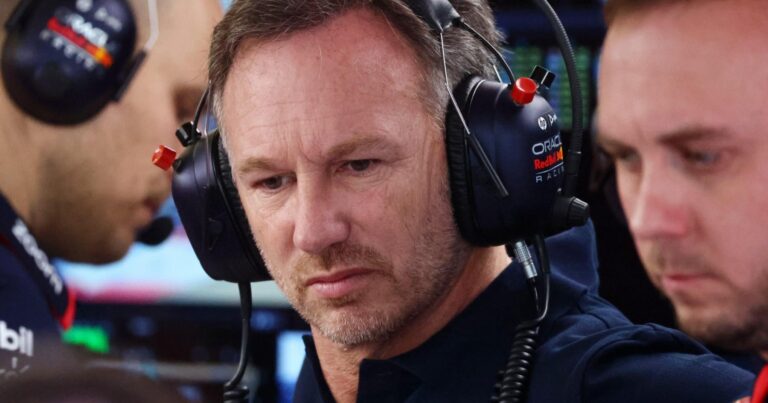Christian Horner has revealed Pink Bull’s deal with its new challenger for the upcoming F1 season has been designed to treatment a problem that finally led to the departure of Sergio Perez.
Perez was launched on the finish of final season following an abysmal run of kind that resulted in Pink Bull failing to defend the constructors’ title it had received the earlier two years.
Pink Bull dominantly began final season, notably with Max Verstappen successful 4 of the primary 5 grands prix, and being ably supported by Perez.
However Perez’s marketing campaign crumbled in dramatic vogue, with the Mexican driver scoring a wretched 49 factors within the ultimate 18 races to depart Pink Bull third within the constructors’ standings, 77 factors behind new champions McLaren.
Horner has highlighted the actual fact the RB20 suffered from a specific downside that Perez was unable to drive round, not like four-time champion Verstappen who may “masks” the priority along with his specific driving model.
These points have been focused to make sure this yr’s RB21 presents a extra constant drive at quite a lot of circuits and in no matter circumstances.
“We have a great understanding of issues growth sensible,” stated Horner, talking to pick out media, together with RacingNews365.
“Round Imola, we launched an improve that made the automobile way more peaky in its efficiency, and it had a really slim working window.
“Once you received it [the car] into that window, for 4 straight laps in Austria, for instance, they have been all ok for pole. It was very a lot in that window.
“If you happen to stepped a millimetre both aspect of it, it turned way more of a problematic automobile to drive, which Max was capable of masks and drive round. I believe that is what harm Checo significantly, is that window was so slim.
“So what the engineers have been very a lot centered on over the winter is the way you broaden that window, not essentially including final efficiency, however simply broadening the window so that you’ve, throughout the completely different challenges and circuits that we go to, a a lot wider working window.”
